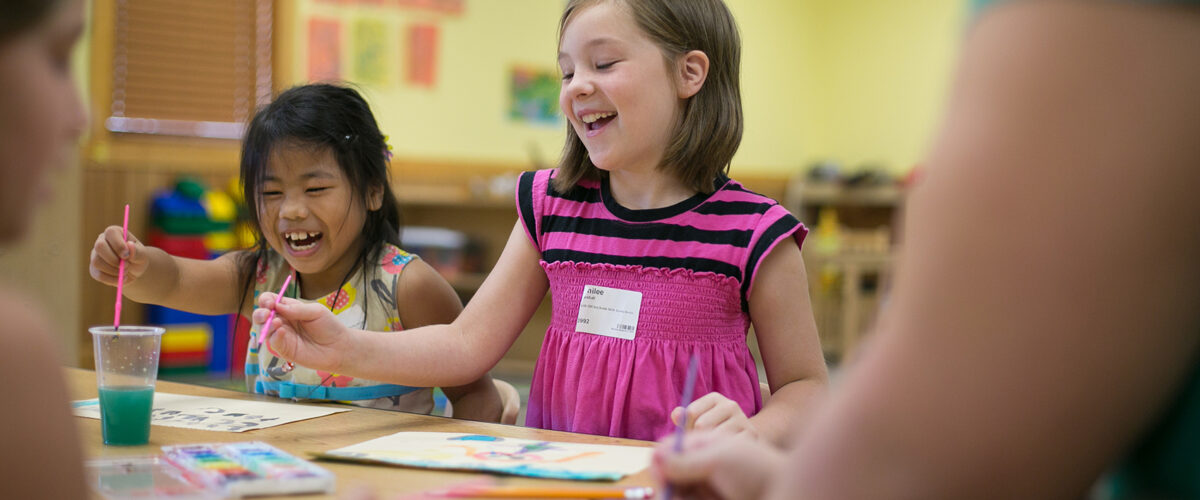Much has been written about the challenges churches faced in maintaining corporate worship during the pandemic, but little has been reported on the changes brought about in religious education.
Yet a new national study from Hartford Institute for Religion Research shows key elements of church-based religious education suffered greatly and have not rebounded to pre-pandemic levels.
While these challenges affected all age levels, the greatest changes appear to have been in programming for preschoolers, children and youth. As one indicator, vacation Bible school took a severe hit and even this year will not return to its pre-pandemic levels.
Prior to the pandemic, 36% of churches offered VBS or some similar form of church day camps during the summer. In 2020, the first year of the pandemic, only 17% of congregations offered VBS. That number rebounded back to 36% in summer 2021, but this year, only 31% of churches say they plan to offer VBS in 2022.
Across the board, however, churches responded with creativity to the limitations on in-person gatherings created by COVID-19.
“Religious education leaders showed considerable originality using online tools, strengthening at-home DIY efforts, hosting intergenerational activities with COVID precautions, and creating novel approaches like Pizza Church or Dungeons and Dragons clubs,” said principal investigator Scott Thumma.
The new study, Exploring the Pandemic Impact on Congregations: Innovation Amidst and Beyond Covid-19 study is a collaborative, five-year research project funded by Lilly Endowment and led by the Hartford Institute for Religion Research at Hartford International University for Religion and Peace.
 While most U.S. churches shut down all in-person religious education and worship events during the first months of the pandemic, worship came back online much sooner than religious education, the study found. One reason is that worship services are more easily offered in an online or hybrid format than children’s Sunday school, for example.
While most U.S. churches shut down all in-person religious education and worship events during the first months of the pandemic, worship came back online much sooner than religious education, the study found. One reason is that worship services are more easily offered in an online or hybrid format than children’s Sunday school, for example.
“Our earlier studies from summer and winter 2021 provided an indication that although worship was being held in person in at least 90% of churches, religious education was still far from normal,” the researchers noted. “It is precisely these types of religious educational programs and activities for children and youth that dramatically shape the next generations of church participants, suggesting that these pandemic challenges and adaptations will have much longer-term consequences for religious communities.”
In short, the researchers said: “It is clear that religious educational programming has been slow to adapt and recover from the pandemic. Our initial survey of the study conducted in summer 2021 showed that the participation of children and youth had decreased for 60% of churches and adult involvement in religious education dropped in 51% of congregations. As the most recent March 2022 survey shows, while 46% of congregations surveyed agreed that their education programming had continued without major disruption, half had faced major disruption.”
 But as with nearly every other pandemic-related trend, these challenges were not felt equally by all congregations: “Smaller churches, those in the mainline tradition, and churches that did not quickly return to a modified in-person education program suffered more during the past two years. It is also clear that virtual religious education did not work well for younger children and youth, though it has benefited adult education efforts. Based on open-ended comments, religious education is being reconceptualized for a significant group of churches, discontinued for a smaller percentage, and is back to ‘business as usual’ for the remaining congregations.”
But as with nearly every other pandemic-related trend, these challenges were not felt equally by all congregations: “Smaller churches, those in the mainline tradition, and churches that did not quickly return to a modified in-person education program suffered more during the past two years. It is also clear that virtual religious education did not work well for younger children and youth, though it has benefited adult education efforts. Based on open-ended comments, religious education is being reconceptualized for a significant group of churches, discontinued for a smaller percentage, and is back to ‘business as usual’ for the remaining congregations.”
The net effect, two years later, is that the number of congregations reporting a “strong emphasis” on children’s religious education has dropped from 57% before the pandemic to 43%.
Notably, nationwide involvement in children’s programming at U.S. churches has dropped 30%, while involvement in youth education has declined 40%.
Among multiple factors, a key driver is less availability of volunteers to teach or lead these classes.
“Overall volunteering has been significantly down since the pandemic, from roughly 40% of the membership in early 2020 to 20% in March 2022.”
“Throughout the pandemic, many congregations have struggled to cultivate consistent and reliable volunteers for ministry programming,” the report explains. “Overall volunteering has been significantly down since the pandemic, from roughly 40% of the membership in early 2020 to 20% in March 2022.
“Given this pattern and the fact that lay volunteers make up the bulk of children’s and youth education programming, it is not surprising that 57% of churches agreed they had volunteer challenges in the education program during the past two years.”
Again, the situation has been more severe in smaller churches than in larger churches, which have a larger pool of potential volunteers.
Adult religious education has proved more flexible and has endured the storm better, researchers found.
“In our pre-pandemic 2020 survey, all but 4% of congregations reported offering religious education for adults and 60% of faith communities gave this activity ‘a lot of emphasis.’ Based on our most recent survey, churches were better equipped to carry this support of adult education into a COVID situation than the aforementioned programming for younger audiences. Fewer churches put their adult education programs on pause compared to their children’s programs, with roughly two-thirds of congregations moving classes online or to a hybrid context.
“By the summer of 2021, adult religious education participation had declined for about half (51%) of the churches surveyed, but only 18% stopped outright. Sixteen percent of programs even saw an increase in participation. In our November 2021 survey, adult programs looked relatively the same as they had six months before, with 17% growing and 50% having decreased.
“Our March 2022 survey showed that adult education participation as a whole had the smallest losses compared to pre-pandemic levels, and many churches’ adult programs remained even (23%) or grew (25%) since 2019.”
Related articles:
Most comprehensive study yet of COVID’s impact on churches finds uneven results


